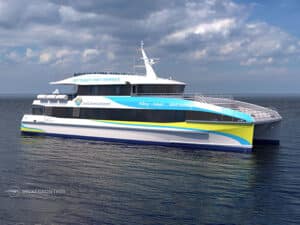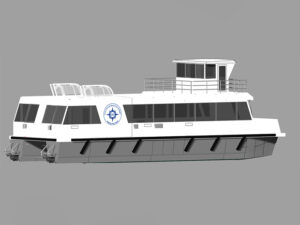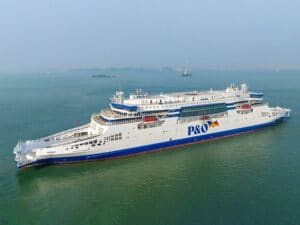
CMAL to study hydrogen fuel cell applications for green ferries
Written by Marine Log Staff AUGUST 16, 2012—Are hydrogen fuel cells practical for use in zero-emission ferries? That question will be addressed in a new feasibility study being carried out by Scottish ferry owner Caledonian Maritime Assets Ltd. (CMAL).
AUGUST 16, 2012—Are hydrogen fuel cells practical for use in zero-emission ferries? That question will be addressed in a new feasibility study being carried out by Scottish ferry owner Caledonian Maritime Assets Ltd. (CMAL).
CMAL was commissioned by Scottish Enterprise to perform the study, which wil be used to apply for European Union funding to develop a zero emission ferry. The EU project could lead to eventual design, development and manufacture of hybrid propulsion systems in Scotland.
“We’re delighted to have been commissioned to carry out the feasibility study for Scottish Enterprise who shoud be applauded for moving in this direction,” says CMAL CEO Guy Platten. “A successful and robust evaluation could open doors to fantastic funding opportunities in the design, development and manufacturing of zero emission ferries. This would be massive for Scotland’s marine industry and exciting to lead globally.”
CMAL, which operates about 30 ferries on the West Coast of Scotland, is already constructing two hybrid propulsion ferries (see image top left) at Ferguson Shipbuilders in Port Glasgow, Scotland. The low-emission ferries will be operated by CalMac and will each be able to accommodate 150 passengers and 23 cars. The first hybrid ferry will enter service in the spring of 2013.
For the hydrogen fuel cell project, a consortium made up of CMAL, Logan Energy, St. Andrews University and Scottish Hydrogen Fuel Cell Association will evaluate several projects that will focus on cost efficient, innovative and eco-friendly vessels and port infrastructure that will benefit Scotland’s rural and island communities.
The Scottish Government has taken an aggressive approach to cutting greenhouse gas emissions. The Climate Change (Scotland) Act of 2009 commits to a 42% reduction in greenhouse gas emisisons by 2020 (relative to 1990 levels).
This commitment has led to strong interest in using hydrogen for delivering lower carbon energy systems that can be used in transportatio, distributed heat and power generation and energy storage systems.
Hydrogen is usually produced using fossil fuels, through a steam reforming process that generates CO2 emissions. However, hydrogen can also be produced through electrolysis using electricity generated from renewable resources such as wind, hydro, solar, biomass ad geothermal. Scottish Enterprise wants to explore the technical ad commercial feasibility of this proposition.





Leave a Reply
You must be logged in to post a comment.